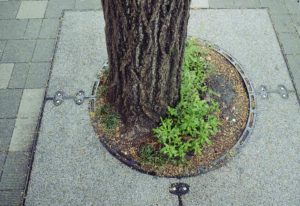Now that summer is in full swing, your trees are becoming more prone to heat stress. Trees and plants need water just like humans. Many homeowners assume that rain provides enough soil moisture and hydration. However, this is not always true during the dry season.
Watering properly is an essential tree care tip that will help them keep healthy and stress-free. But watering can be tricky for some people. Follow this simple guide to ensure your trees are watered regularly and consistently:
Watering Guidelines
As a rule of thumb, trees need at least about one inch of water per week. The water should be applied slowly so that it soaks down. Most tree roots are closer to the trunk and not too deep. The best way to water trees is to concentrate on watering the area beneath the branches.
You might be wondering just how much water your tree needs. Several factors affect watering, such as the size and species of tree. The larger the tree, the more water it requires.
For young trees, water the roots around the trunk and not the trunk itself. Newly planted trees can’t store much water because they haven’t grown a large network of roots. To ensure growth, water the area where the root ball is. Adding a 3-ft wide mulch ring around the trunk will also help maintain soil moisture. Water them every couple of weeks and more often during dry weather.
For mature trees that are more than 25 years old, water them weekly about 10 gallons per 1 inch of trunk diameter. The key is watering deeply and consistently. The deep watering method helps speed the root establishment and prevent over/underwatering.
Transpiration
No matter the size of your tree, the water it will absorb may be lost through transpiration. During this process, the water is spread throughout the tree before it evaporates as water vapor from the small holes in the foliage. As a result, transpiration causes a huge loss of water.
To know whether your trees need water, you can check the soil. When you touch the soil with your finger, it should be moist and not soggy. You may also use a garden trowel and a wooden dowel inserted into the ground. If the soil is dry to the touch, your tree needs water.
Best Time To Water Plants
There is no ideal time for watering trees. It all depends on the size of your tree, soil conditions, and weather conditions. However, most tree experts recommend watering plants during the early morning. Since the weather is still cool, the water won’t evaporate quickly. This way, the roots have a chance to absorb most of the water.
Watering during the summer afternoon is not advisable because up to half of the water can be lost to evaporation.
Watering Tools
If you have a dry landscape, don’t fret! Here are some of the available tools for watering trees and keeping your lawn healthy and hydrated.
- Hose
- Sprinkler
- Soaker Hose
- Slow-Release Watering Bags
- Rain leaders or Scuppers
- Flexible Downspout Extender
- Automatic Irrigation
How Plants Deal With Heat Stress
During the summer, trees experience a lot of heat stress. When not addressed immediately, this can have lasting effects on them. Leaf rolling, yellowing leaves, brown edges, blossom, and fruit drop, and sunburn are just some of the warning signs you need to watch out for. As a tree owner, be sure to provide them with the appropriate care they need.
Aside from proper deep watering, adding enough mulching and removing weeds are the best ways to take care of your trees during the summer season. Trees planted in loamy soil can withstand dry periods better because this type of soil contains more moisture, retains more water, and has good drainage.
Deeper is Better
Like what we have already discussed before, slow and deep watering is the best way to go. Deep watering allows the root ball to take up adequate moisture. For this method, you can opt for drip irrigation. It loses less water to evaporation compared with overhead watering or sprinklers.
Watering Tips During Different Seasons
Spring
This season is the time when temperatures gradually rise. However, occasional rains and thunderstorms can still happen. There will be plentiful precipitation in the springtime, so be sure to monitor the amount of rainfall. If you get less than one inch per week, supplemental watering may be needed. You are encouraged to apply adequate water to all woody plants.
Summer
As temperatures rise, pay extra attention to your trees and step in with more watering. Always check the soil around your tree before adding water. Doing so will prevent the chances of over/underwatering. To keep them from wilting, you may water your trees and plants as long as you follow the recommended guidelines.
Fall
From September through the middle of October, trees won’t require as much watering. This is because precipitation increases before the winter season. Water your trees at least twice a week.
Winter
Prior to the ground freezing, you can apply water liberally to prevent winter kill. Take note that this is only necessary before the frost hits. Once the snow starts to fall on the ground, you may skimp on watering because your trees will go dormant for the winter.
Final Thoughts
Regular inspection is always the answer to your watering-related questions. If you need help with taking care of your trees, get in touch with us at Midstate Tree Service of Harrisburg. We offer tree removal, emergency tree service, tree trimming and cutting, stump removal and grinding, wood chipping, and so much more. Schedule a consultation today!


